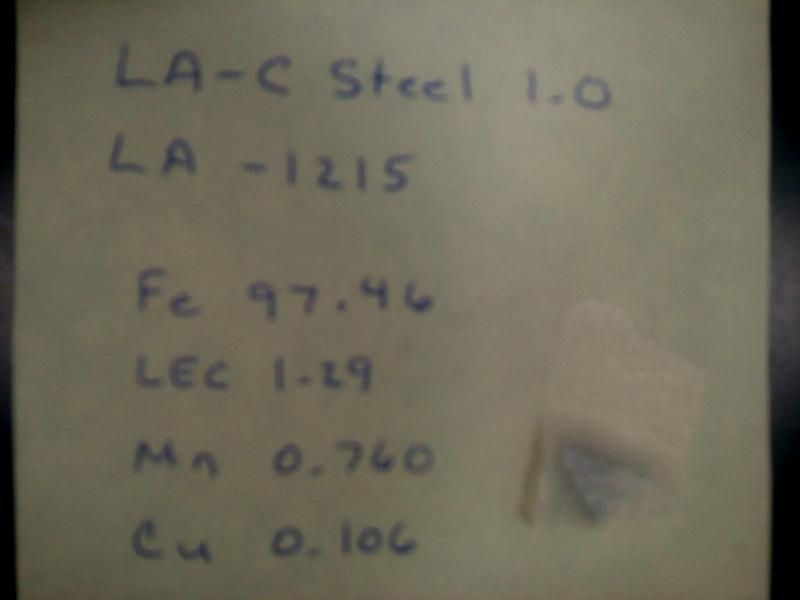Been meaning to do try it for a while, picked up an old saw at a barn sale.
I've never been one to play guessing games so I had one of the teeth zapped in the lab.
This is what I received....(the tech said the copper is probably a misread)

It looks like 1095 to me....should I treat is as such?
~Jason
|quoted:
Been meaning to do try it for a while, picked up an old saw at a barn sale.
I've never been one to play guessing games so I had one of the teeth zapped in the lab.
This is what I received....(the tech said the copper is probably a misread)

It looks like 1095 to me....should I treat is as such?
~Jason
Jason, slow response to your question, probably for two reasons, the Blade Show was last weekend, and the notes in your images are hard to read. I am pretty good with deciphering these chemistries and I cannot really make out the references in the handwritten analysis notes. I am not sure what the LEC refers to, perhaps the carbon was determined via Leco after a spectrographic hand held unit gave them the rest?* And if that is the carbon, it is significantly higher than expected.
If the only elements you have are the Mn and the trace Cu then you can proceed as if it were a simple 10XX series, which will need a temperature range from 1475F to 1500F and quench in a fast oil. The carbon will determine where your temperature will be in that range. .5% to .85% carbon will be closer to 1500F and .86% to 1%+ will be at 1475F. It is good to note though that if there are any other elements present in greater than trace numbers things have to be adjusted
*hand held units typically cannot give carbon as it is too wide a spread in the spectrum, it is good to know this as a lot of confusion has been spawned by spectrographic tests being done with yard sorting guns which cannot give carbon content and the rest is filled in with guesses or assumptions, and you know they say about "assume". I bought a large amount of "O-2" once that did not have more than .35% carbon, but since the seller only had it shot with a hand held unit and got the alloying of O-2, they assumed, without the carbon information, that it was O-2. Like all other tests, spectral analysis is only one very limited part of the puzzle and can only tell you certain things, it requires quite a bit of skill and experience to interpret the results when combined with other tests. Now if the spectrometer is a larger lab type unit, which is $$$$, and even more $$$$ just to maintain, it can be programmed to read a much wider section of the spectrum and give you other elements like carbon.
"One test is worth 1000 'expert' opinions" Riehle Testing Machines Co.
Thanks for the reply Kevin!
I did get in touch with the retired head of the lab; the notes are shorthand for "Low Allow"(LA) and "Low Element Content"(LEC). I for got offhand what the 1215 means <img src=' http://www.americanbladesmith.com/ipboard/public/style_emoticons//sad.gi f' class='bbc_emoticon' alt=':(' /> .
I can't peak to what tools they used, I'll be sure to ask in the future.
I was told that it fell in the range of 1095 so I'll gratefully use your notes as a guide.
Much appreciation!
~Jason

